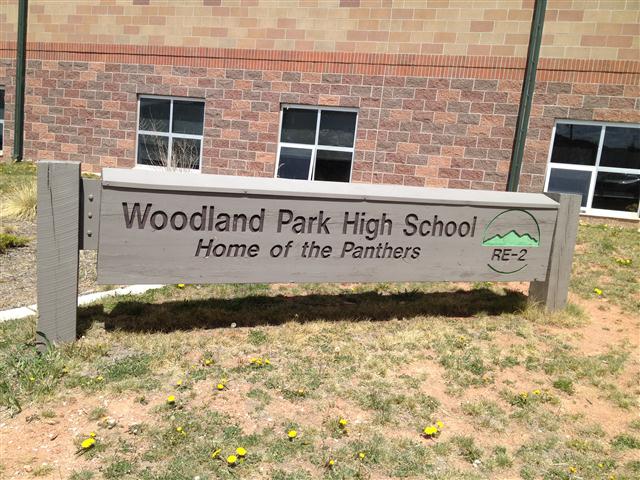Anatomy of a (Flipped) Meme
(See also, part 2: The Curious Case of Flipped-Bloom's)
You know the 'Flipped Learning' meme?
Flip it?
The Flip?
The Flipped Classroom?
Okay then, smartie, have you noticed its new iteration, 'Flipped Bloom's'? It sprung like a bolt out of the blue not 3 weeks ago.
Out of nowhere? And why now? Why traction, now?
Curiouser and curiouser. Flipped Bloom's next post, first a prequel:
The Prequel: 'Flipped Learning'
Earlier this month I had the pleasure of meeting Aaron Sams in Denver, and picked his brains over the history of the "Flipped Learning" meme.
Sams told me, "Dan Pink ran an article in 2010, November, and he called this whole shifting direct instruction out of the class on video the 'Fisch Flip' referencing Karl Fisch.

Sams and his friend Bergmann were about to publish a book on podcasting, vodcasting etc, but with Pink using the term 'Flip' they reworked the keywords in their book and called it 'Flip-Mastery'.
They put in their book for publishing in February, 2011. As it happened, not two weeks later the illustrious Sal Khan gave his Khan Academy TED talk. In the talk he says "And the teachers would write, saying, 'We've used your videos to flip the classroom.'" He uses the phrase 'flip' like it was already old news.
So Salman Khan heard teachers using the word 'Flip' before 2011. Maybe they'd read Dan Pink's article from the UK newspaper, the Telegraph? (Or a much earlier article - see below)
Pink + Khan seems to have made the idea go high-level viral. Khan in particular acted as a 'super-node' in the network, and ideas can jump fractal scale dimensions when championed in a space that has everyone's attention.
What's in a Meme?
That which we call a rose...
A meme is an idea on wheels. It has its driver's license and its off around the world, thanks!
It can only drive Class A vehicles, and they don't take many passengers. If it's going to go viral, it can't carry much with it.
This is both the strength and weakness of the 'Flipped Learning' meme.
To my mind, mainly strength.
The literal meaning 'Swap the activities of school and home', is in itself a delightfully, scrumptiously, subversive, disruptive message; just the thing to sweep out cobwebs, challenge some thinking just where it needs challenging, because for the love of all things kind and sweet we do not need any more teacher talk, thanks universe. Swap the stuff OUTSIDE this rattling cage for what's IN IT. Amen, brother.
THAT meaning is, of course, a parody of the term anyway, but parody is where the magic begins.
I don't know any teacher who has so crude a view of learning that they hear 'Flipped Learning' and immediately think to literally flip class activity and home activity, lecture and application, end of story, and slap their hands together and say 'mah werk heah eez dun!'
Rather, what happens, and I think this goes to the way the meme works, is when you first hear it and understand the literal implication, you envisage the caricature, but then, and this is magical, you bounce of the caricature into something more nuanced.
So, in a funny way, the meme works really nicely.
Step #1 Teacher hears the meme.
Step #2 They react against it as a caricature and formulate their own more balanced model.
Step #3 They pass on the meme, often in the form of criticism of it.
('Can't talk honey, I must blog, someone on the internet is wrong!')
Just go to google blog search and search for Flipped Learning to see this effect. 100s of blogs trying to correct the straw-man notion!
Aaron Sams told me, "I mean, I’ve been playing defense on the internet primarily because of misconceptions of people trying to pitch in whole lots, [saying] 'is it just this?'".
"It’s 'Think about what the best use your time with your students face to face is and if you can shift something out of that time so they can access it asynchronously.'"
The meme begs this question, and it's a question it doesn't hurt to ask.
Sams isn't locking into any model! Nor are his students or their friendly robot.
Like every buzz-word, to travel it has to be hopelessly simplified.
The phrase, "Think about what the best use of your time with your students face to face is and if you can shift something out of that time so they can access it asynchronously"-classroom doesn't roll of the tongue.
Miraculously, the simpler phrase "Flip" unpacks itself in each brain it encounters, through an automatic unfolding mechanism called 'critique'. This story is archetypical.
In computing terms, the 'flip' virus invokes our reliable critiquing apparatus, allowing it to travel light, and poses as straw-man to intensify traction. Watch the edubloggers all take to Wordpress, one giant army, to correct the misconception! Clever meme!
It knows!
It smiles to itself. It beckons: "unpack me, then copy me and pass me on!"
An Idea Whose Time Has Come
So Dan Pink writes about the 'Fisch Flip', Sams and Bergmann write a book, and Khan gives a TED talk, and KABOOM! The idea explodes, and the rest is history.
I hear you say, "Steve, flipped learning goes way, way back before 2011."
...and was being applied instinctively and intuitively all over the place. I was applying related concepts in 2002 via a website called 'Nicenet.org' and when Moodle arrived in 2005, I went ballistic. I dare say you did too.
Prehistory of a Meme
If you had your ear to the ground you'd know the poorer, clumsier, older brother meme, the veritable proto-meme, the (Baker's Saturn to Khan's Zeus):
"Be the guide on the side, not the sage on the stage."
Too many syllables for the proletariat, but the phrase gathered traction, and when I heard it from MrsAngell a few years ago it stuck with me. Wikipedia tells me the proto-meme came from a conference paper in 2000 "The classroom flip: using web course management tools to become the guide by the side" by J. Wesley Baker. This is pre-Web 2.0.
He even uses the word 'flip' in the title, but that didn't seem to travel at the time.
Our attention spans were longer before Twitter came along. The brevity of 'Flip'; the sheer economy of character spaces, was not a crucial advantage. A cost of 4 units, versus the 47 of 'Guide by the side instead of sage on the stage' now makes all the difference. It's all pure-poetry now, and nimble memes exploit efficiency to dominate.
Ha ha!
Other authors in 2000 were referring to 'Inverting' the classroom. Yah, not so catchy. Try saying 'invert' out loud a few times, then say 'flip'. Now, which one gets a girlfriend?
The Wikipedia article pushes further back into the 1990s and Eric Mazur. Would the idea have ever bunny hopped up the fractal scale dimension without that long beginning?
Why pause the time machine there? Why stop with the internet?
The difference between an interactive video and a textbook is only a matter of degrees.
If a 1960s teacher said 'read about calculus tonight in your book and tomorrow we'll use it to do something crazy', how is that not Flipped-Learning?
The internet just a really big book, on a continuum since some Sumerians got sick of counting sheep, grabbed a chisel and a rock, and composed one of the world's earliest web-pages.
Collective Brainwaves
So it's not that the idea is new, ain't nothing new, it's all just short shorts.
I'm just fascinated at the turn of events that lead to its fractal-jump in late 2010, from rumbling in the background to a edtech popculture icon.
You can have a great idea, but you can't force traction.
It's Fractal
When I say it's fractal I mean the meme jumped a level of magnitude in late 2010, early 2011. A google trends analysis on searches for the phrase 'flipped' seems to support this:
A Joke
Have you heard the joke:
Q: What's the difference between teacher-talk and a video?
A: At least you can turn a video off.
For this much we are grateful.
...to be continued. In Part 2, the meme spawns a child: "Flipped Bloom's"





